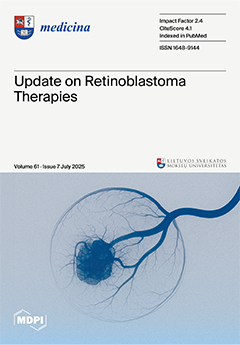Background and Objectives: The perioperative use of beta-blockers remains controversial due to conflicting evidence of their risks and benefits. The aim of this study was to evaluate the association between chronic beta-blocker (bb) therapy and perioperative cardiac events in non-cardiac surgeries using 24 h continuous Holter monitoring.
Materials and Methods: A prospective observational study was conducted on patients undergoing elective or emergency non-cardiac surgery at a Romanian tertiary care hospital. The patients were divided into two groups: G1 (not receiving Bb) and G2 (on chronic Bb). The incidences of perioperative cardiac events, such as severe bradycardia (<40 b/min), new-onset atrial fibrillation (AF), extrasystolic arrhythmia (Ex), and sustained ventricular tachycardia (sVT) and arterial hypotension, were compared between the two groups using clinical, electrocardiography (ECG), and Holter ECG data. Beta-blocker indications, complications, and outcomes were analyzed using chi-squared tests and logistic regression.
Results: A total of 100 consecutive patients (63% men, mean age of 53.7 years) were enrolled in the study. G2 included 30% (
n = 30) of patients on chronic beta-blocker therapy. The indications included atrial fibrillation (46.7%,
n = 14), arterial hypertension (36.7%,
n = 11), extrasystolic arrhythmias (10%,
n = 3), and chronic coronary syndrome (6.6%,
n = 2). Beta-blocker use was significantly associated with severe bradycardia (
n = 6;
p < 0.001) in G2, whereas one patient in G1 had bradycardia, and 15 and 1 patients had hypotension (
p < 0.001) in G1 and G2, respectively. The bradycardia and arterial hypotension cases were promptly treated and did not influence the patients’ prognoses. The 14 patients with AF in G2 had a 15-fold higher odds of requiring beta-blockers (
p < 0.001, odds ratio (OR) = 15.145). No significant associations were found between beta-blocker use and the surgery duration (
p = 0.155) or sustained ventricular tachycardia (
p = 0.857). Ten patients developed paroxysmal postoperative atrial fibrillation (AF), which was related to longer surgery durations (165 (150–180) vs. 120 (90–150) minutes;
p = 0.002) and postoperative anemia [hemoglobin (Hg): 10.4 (9.37–12.6) vs. 12.1 (11–13.2) g/dL;
p = 0.041].
Conclusions: Patients under chronic beta-blocker therapy undergoing non-cardiac surgery have a higher risk of perioperative bradycardia and hypotension. Continuous Holter monitoring proved effective in detecting transient arrhythmic events, emphasizing the need for careful perioperative surveillance of these patients, especially the elderly, in order to prevent cardiovascular complications These findings emphasize the necessity of tailored perioperative beta-blocker strategies and support further large-scale investigations to optimize risk stratification and management protocols.
Full article






